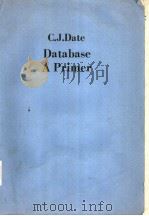《an introduction to database systems P536》
| 作者 | 编者 |
|---|---|
| 出版 | 未查询到或未知 |
| 参考页数 | |
| 出版时间 | 没有确切时间的资料 目录预览 |
| ISBN号 | 无 — 求助条款 |
| PDF编号 | 820549758(仅供预览,未存储实际文件) |
| 求助格式 | 扫描PDF(若分多册发行,每次仅能受理1册) |
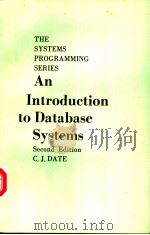
PART 1DATABASE SYSTEM ARCHITECTURE3
CHAPTER 1BASIC CONCEPTS3
1.1 What Is a Database?3
1.2 Why Database?6
1.3 Data Independence9
1.4 An Architecture for a Database System13
Exercises21
References and Bibliography22
CHAPTER 2STORAGE STRUCTURES27
2.1 Introduction27
2.2 Possible Representations for Some Sample Data30
2.3 The Physical Record Irnerface: Intlexing Techniques37
2.4 General Indexing Techniques40
Exercises43
References and Bibliography44
CHAPTER 3DATA MODELS AND DATA SUBLANGUAGES51
3.1 Introduction51
3.2 The Relational Approach52
3.3 The Hierarchical Approach55
3.4 The Network Approach58
3.5 Higher-Level Data Sublanguages62
3.6 Summary66
Exercises67
References and Bibliography68
PART 2THE RELATIONAL APPROACH73
CHAPTER 4THE RELATIONAL DATA MODEL73
4.1 Relations73
4.2 Domains and Attributes75
4.3 Keys77
4.4 Summary79
Exercises81
References and Bibliography81
CHAPTER 5A DATA SUBLANGUAGE BASED ON RELATIONAL CALCULUS83
5.1 Introduction83
5.2 Assumptions and Definitions84
5.3 Retrieval Operations86
5.4 Storage Operations96
5.5 Library Functions98
5.6 Summary103
Exercises104
References and Bibliography107
CHAPTER 6A DATA SUBLANGUAGE BASED ON RELATIONAL ALGEBRA113
6.1 Introduction113
6.2 Traditional Set Operations114
6.3 Special Relational Operations115
6.4 Retrieval Examples118
6.5 Storage Examples119
6.6 Summary119
Exercises120
References and Bibliography120
CHAPTER 7THE DATA SUBLANGUAGE SEQUEL123
7.1 Introduction123
7.2 Retrieval Operations124
7.3 Storage Operations131
7.4 Library Functions132
7.5 Summary134
Exercises134
References and Bibliography134
CHAPTER 8QUERY BY EXAMPLE137
8.1 Introduction137
8.2 Retrieval Operations138
8.3 Retrieval Operations on Tree-Structured Relations143
8.4 Storage Operations146
8.5 Library Functions148
8.6 Retrieval Operations on the Dictionary149
8.7 Summary151
Exercises152
References and Bibliography152
CHAPTER 9FURTHER NORMALIZATION153
9.1 Introduction153
9.2 Functional Dependence154
9.3 First, Second,and Third Normal Forms156
9.4 Relations With More Than One Candidate Key163
9.5 Fourth Normal Form167
9.6 Summary169
Exercises170
References and Bibliography172
CHAPTER 10THE EXTERNAL MODEL179
10.1 Introduction179
10.2 External Relations180
10.3 External Domains183
10.4 Data Sublanguage Operations185
10.5 Changes to the Conceptual Schema186
10.6 Summary188
Exercises190
References and Bibliography190
CHAPTER 11SOME RELATIONAL SYSTEMS191
11.1 Introduction191
11.2 Early Systems191
11.3 Recent Systems193
References and Bibliography196
PART 3THE HIERARCHICAL APPROACH205
CHAPTER 12THE ARACHTTECTURE OF AN IMS SYSTEM205
12.1 Background205
12.2 Architecture206
References and Bibliography208
CHAPTER 13THE INS DATA MODEL209
13.1 Physical Databases209
13.2 The Database Description212
13.3 Hierarchical Sequence215
13.4 Some Remarks on the Education Datebase216
Exercise217
References and Bibliography218
CHAPTER 14THE IMS EXTERNAL MODEL219
14.1 Logical Databases219
14.2 The Program Communication Block221
Exercise223
References and Bibliography223
CHAPTER15THE IMS DATA SUBLANQUAGE225
15.1 Defining the Program Communication Block (PCD)225
15.2 The DL/I Operations227
15.3 DL/I Examples229
15.4 Constructing the Segment Search Angument (SSA)234
15.5 SSA Command Codes234
Exercises239
References and Bibliography239
CHAPTER 16IMS STORAGE STRUCTURES241
16.1 Introduction241
16.2 HSAM243
16.3 HISAM244
16.4 HD Structures: Pointers249
16.5 HDAM251
16.6 HIDAM254
16.7 Secondary Data Set Groups255
16.8 The Mapping Definition260
16.9 Reorganization264
16.10 Data Independence265
16.11 Summary267
Exercises268
References and Bibliography268
CHAPTER 17IMS LOGICAL DATABASES269
17.1 Logical Databases (LDBs)269
17.2 An Example270
17.3 Termninology273
17.4 The Database Deacriptions (DBDs)274
17.5 Loading the Logicad Database277
17.6 Processing the Logical Database278
17.7 Bidirectional Logical Relationships280
17.8 A Note on the Storage Structure286
17.9 Logical Databases Involving a Single Physical Database286
17.10 Some Rules and Restrictions290
17.11 Summary291
Exercises291
References and Bibliography292
CHAPTER 18IMS SECONDARY INDEXING293
18.1 Introduction293
18.2 Indexing the Root on a Field Not the Sequence Field295
18.3 Indexing the Root on a Field in a Dependent298
18.4 Indexing a Dependent on a Field in That Dependent301
18.5 Indexing a Dependent on a Field in a Lower-Level Dependent303
18.6 Additronal Features304
18.7 Summary304
Exercises306
References and Bibliography306
PART 4THE NETWORK APPROACH309
CHAPTER 19THE ARCHITECTURE OF A DBTG SYSTEM309
19.1 Background309
19.2 Architecture311
References and Bibliography313
CHAPTER 20THE DBTG DATA MODEL315
20.1 Introduction315
20.2 The Set Construct: Hierarchical Examples316
20.3 The Set Construct: Network Examples323
20.4 Singular Sets326
20.5 Areas327
20.6 Database-Keys328
20.7 A Sample Schema329
20.8 Membership Class335
20.9 LOCATION MODE338
20.10 SET SELECTION339
20.11 Source and Result Data-Items343
20.12 DDL/COBOL Terminology344
Exercises345
References and Bibliography346
CHAPTER 21THE DBTG EXTERNAL MODEL349
21.1 Introduction349
21.2 Differences between the Sub-Schemaand Schema349
21.3 A Sample Sub-Schema351
Exercise351
References and Bibliography352
CHAPTER 22THE DBTG DATA SUBLANGUAGE353
22.1 Introduction353
22.2 Currency353
22.3 GET356
22.4 MODIFY357
22.5 CONNECT359
22.6 DISCONNECT359
22.7 ERASE360
22.8 STORE361
22.9 FIND361
22.10 Miscellaneous Statements368
Exercises369
References and Bibliography371
PART 5SECURITY AND INTEGRITY375
CHAPTER 23SECURITY375
23.1 Introduction375
23.2 Identification and Authentication377
23.3 Access Control378
23.4 Security in IMS385
23.5 Security in DBTG386
23.6 Bypassing the System388
Exercise389
References and Bibliography390
CHAPTER 24INTEGRITY395
24.1 Introduction395
24.2 Integrity Constraints396
24.3 Data Sharing405
24.4 Support Routines408
24.5 Integrity in IMS410
24.6 Integrity in DBTG412
References and Bibliography418
PART 6REVIEW, ANALYSIS, AND COMPARISONS425
CHAPTER 25THE THREE APPROACHES REVISITED425
25.1 The ANSI/SPARC Architecture425
25.2 The External Level429
25.3 The Conceptual Level443
25.4 Conclusion456
References and Bibliography457
Answers to Selected Exercises463
Index525
《an introduction to database systems P536》由于是年代较久的资料都绝版了,几乎不可能购买到实物。如果大家为了学习确实需要,可向博主求助其电子版PDF文件。对合法合规的求助,我会当即受理并将下载地址发送给你。
高度相关资料
-
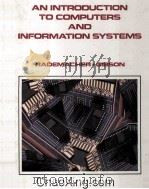
- AN INTRODUCTION TO COMPUTERS AND INFORMATION SYSTEMS
- 1983 South-Western Publishing Co
-
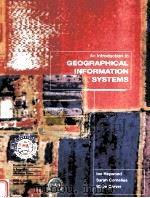
- AN INTRODUCTION TO GEOGRAPHICAL INFORMATION SYSTEMS
- 1998 SARAH CORNELIUS AND STEVE CARVER
-

- An Introduction to Expert Systems
- 1983 Edition Eyrolles
-
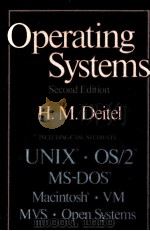
- AN INTRODUCTION TO OPERATING SYSTEMS SECOND EDITION
- 1990 ADDISON WESLEY PUBLISHING COMPANY
-

- AN INTRODUCTION TO COMPUTER-BASED LIBRARY SYSTEMS SECOND EDITION
- 1984年 JOHN WILEY AND SONS
-
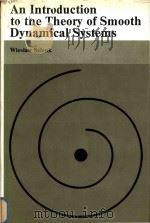
- An introduction to the theory of smooth dynamical systems
- 1992 Wiley; PWN-Polish Scientific
-

- An introduction to chaotic dynamical systems
- 1986 Benjamin/Cummings
-
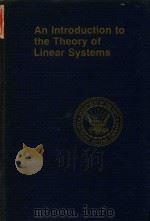
- An introduction to the theory of linear systems
- 1977 [Dept. of the Navy
-
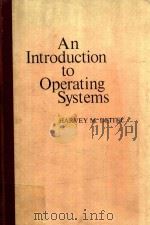
- AN INTRODUCTION TO OPERATING SYSTEMS
- 1983 ADDISON-WESLEY PUBLISHING COMPANY
-
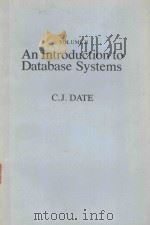
- AN INTRODUCTION TO DATABASE SYSTEMS VOLUME II
- 1983 COPYRIGHT
-
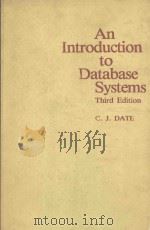
- AN INTRODUCTION TO DATABASE SYSTEMS THIRD EDITION
- 1981 COPYRIGHT
-

- JOURANL OF FOOD TECHNOLOGY VOLUME 16 NUMBER 5
- 1981 BLACKWELL SCIENTIFIC PUBLICATIONS
-
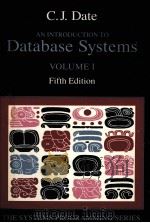
- AN INTRODUCTION TO DATABASE SYSTEMS VOLUME 1 FIFTH EDITITON
- 1990 ADDISON-WESLEY PUBLISHING COMPANY
-

- AN INTRODUCTION TO THE THEORY OF VIBRATING SYSTEMS
- 1961 OXFORD AT THE CLARENDON PRESS
提示:百度云已更名为百度网盘(百度盘),天翼云盘、微盘下载地址……暂未提供。➥ PDF文字可复制化或转WORD
